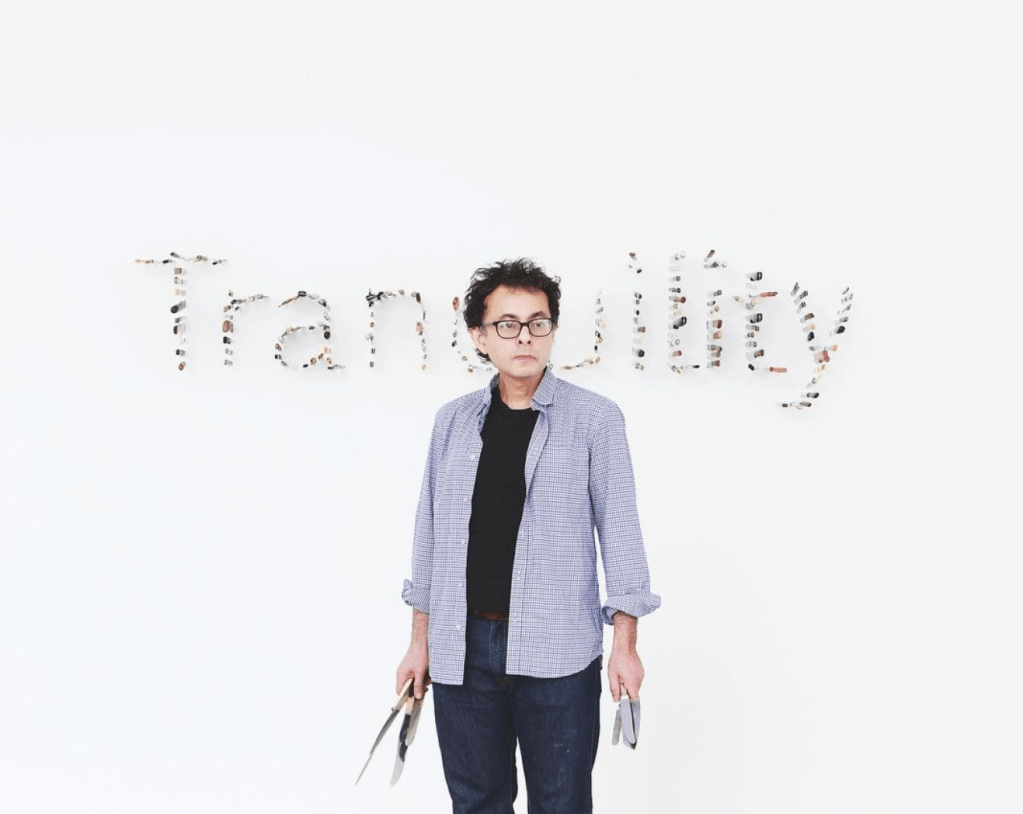Iranian Artist Farhad Moshiri Dies at 61

Farhad Moshiri, a prominent contemporary Iranian artist, passed away on July 16th at the age of 61. The Third Line gallery, his Dubai-based representative, confirmed his death.
âOur journey with Moshiri began in 2006 with âNew Paintings by Farhad Moshiriâ at our first space in the UAE. Since then, weâve cherished witnessing his ever-evolving practice,â the gallery wrote on Instagram. âOur thoughts are with his family. Farhad Moshiri will be deeply missed, remembered as both a friend and artist. May his soul rest in eternal peace.â
Moshiri was renowned for his unique blend of Persian visual traditions and Pop art sensibilities. He effortlessly intertwined elements of American consumerism, advertising, pop music, and comics with the rich tapestry of Persian embroidery and calligraphy. His work was often adorned with beads, glitter, and faux gems, adding a layer of playful subversion to his commentary on societal issues.
âHe not only established the first wave of contemporary art post 1979, but also became one of the rare artists who radically, and successfully, brought all of the great craftsmanship, iconography and storytelling inherent in Persian culture and history into his contemporary practice,â Ashkan Baghestani, Sothebyâs director for Middle Eastern and contemporary art, told the National. âThe breadth, diversity and scope of his output in this sense was unparalleled.â
Born in Shiraz, Iran in 1963, Moshiri's family owned cinemas, providing him with early exposure to American films. After the Iranian Revolution, his family immigrated to Los Angeles where he earned a fine arts degree from the California Institute of the Arts in 1984. His artistic explorations in installation, video, and painting were heavily influenced by Pop art and conceptualism.
He deftly fused high art with lowbrow culture, mirroring the complex and multifaceted nature of his young home country, rich with ancient traditions. His work often reflected on the social and political landscape of both Iran and the United States, exploring the complexities of identity and belonging.
Moshiri was a prolific collaborator, working for decades with a dedicated group of Iranian craftswomen on various projects. "SNOW FOREST 002A" (2017), first exhibited at Perrotin in New York, is a prime example of this collaboration. This piece recreated a photograph of a snowy forest using black and white thread and beads, meticulously crafted by the women. The project spanned six months, with the women working independently in their homes before delivering the final piece.
Lichtensteinian figures and everyday objects often appeared in his work, but he was equally adept at using words to create powerful statements. âGodâ (2012) features a patchwork of embroidered canvases where the word "God" is repeated 42 times, resembling a flashing neon advertisement. While relatively innocuous in a secular context, the piece takes on a sardonic edge when considered in the context of an Islamic setting in Iran, where matters of worship are intricately intertwined with power.
Despite his use of humor and playful aesthetics, Moshiri resisted the notion that his work was merely visual gags. "There is a tendency for the Iranian art community to believe that Art is no joking matter. I totally agree with that," he told the Standard in 2014. "Art is serious business. I canât help it if you find something funny in my work."
Moshiri's legacy as a multi-faceted artist is undeniable. He exhibited extensively in Tehran, Europe, and the United Arab Emirates, collaborating with The Third Line and Perrotin. His first solo museum show in the United States was held in 2018 at the Andy Warhol Museum in Pittsburgh, further solidifying his place in the international art world.
His passing is a significant loss for the art world, leaving behind a rich body of work that continues to inspire and challenge viewers. He will be remembered for his innovative approach to art, his fearless exploration of social and political themes, and his unwavering commitment to his artistic vision.





